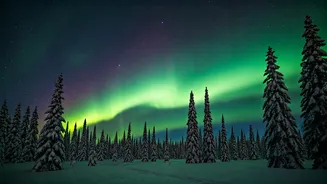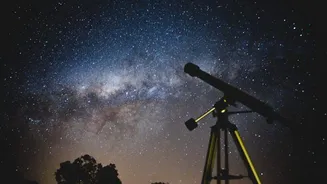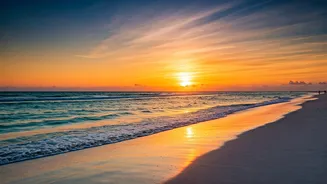Understanding Aurora Borealis
The aurora borealis is a phenomenal celestial event that happens when electrically charged particles from the sun collide with gases in Earth's atmosphere.
These collisions cause the air to glow, primarily in the high-latitude regions around the Arctic and Antarctic. The colors seen in the aurora depend on the type of gas that is involved and the altitude. For example, green is a common color that is emitted by oxygen, whereas red is produced by higher altitudes. The intensity and visibility of the aurora are also impacted by solar activity, which varies in cycles. Stronger solar flares often lead to brighter and more widespread auroral displays. Planning a viewing trip involves understanding these cycles and monitoring predictions to increase your likelihood of seeing the lights. Additionally, light pollution, weather conditions, and the observer's location all play a crucial role in the aurora's visibility.
Possible Viewing States
Specific U.S. states often offer prime viewing opportunities for the Northern Lights. States like Alaska, due to its proximity to the Arctic Circle, regularly experience aurora activity. Other states in the northern United States, such as Montana, North Dakota, Maine, and Minnesota, also have potential for viewing, particularly during periods of increased solar activity. However, even in these locations, visibility isn't guaranteed; it depends on the strength of the solar flares and the weather conditions. Furthermore, the viewing opportunities can shift quickly, and it is essential to monitor real-time aurora forecasts and space weather predictions to understand the optimum times and locations for viewing. These forecasts are usually provided by services and can offer up-to-date details to increase the chances of catching a glimpse of the auroras.
Factors Affecting Visibility
Several elements heavily influence whether you can see the Northern Lights. The most critical factor is the strength of the solar activity, measured by the Kp index. Higher Kp values indicate stronger geomagnetic storms, raising the possibility of aurora visibility in lower latitudes. Weather conditions are also very important; clear, dark skies are necessary for the lights to be seen. Clouds and light pollution from urban areas can obscure the aurora. Therefore, finding a location away from city lights and with minimal cloud cover is essential. Additionally, the time of year is a factor; the aurora is typically most visible during the winter months, when nights are long and dark. The viewing conditions are more favorable then because of the reduced hours of daylight. Planning your viewing trip based on these factors is important for increasing the chances of seeing the lights.
Tips for Viewing Success
To boost your chances of witnessing the Northern Lights, you should take a few steps. Firstly, monitor aurora forecasts and space weather predictions. Websites and apps provide real-time updates on auroral activity and Kp index. Secondly, choose your viewing location wisely. Get away from city lights and find a spot with a clear view of the northern horizon. Thirdly, be patient and allow your eyes to adjust to the darkness; this may take up to 20 to 30 minutes. Using binoculars or a camera with a long exposure setting can enhance the viewing experience. Also, dress warmly as nights can be very cold, especially in the northern regions. Finally, be prepared for potential disappointment as visibility is never guaranteed; however, the beauty of the experience is often worth the effort.
















